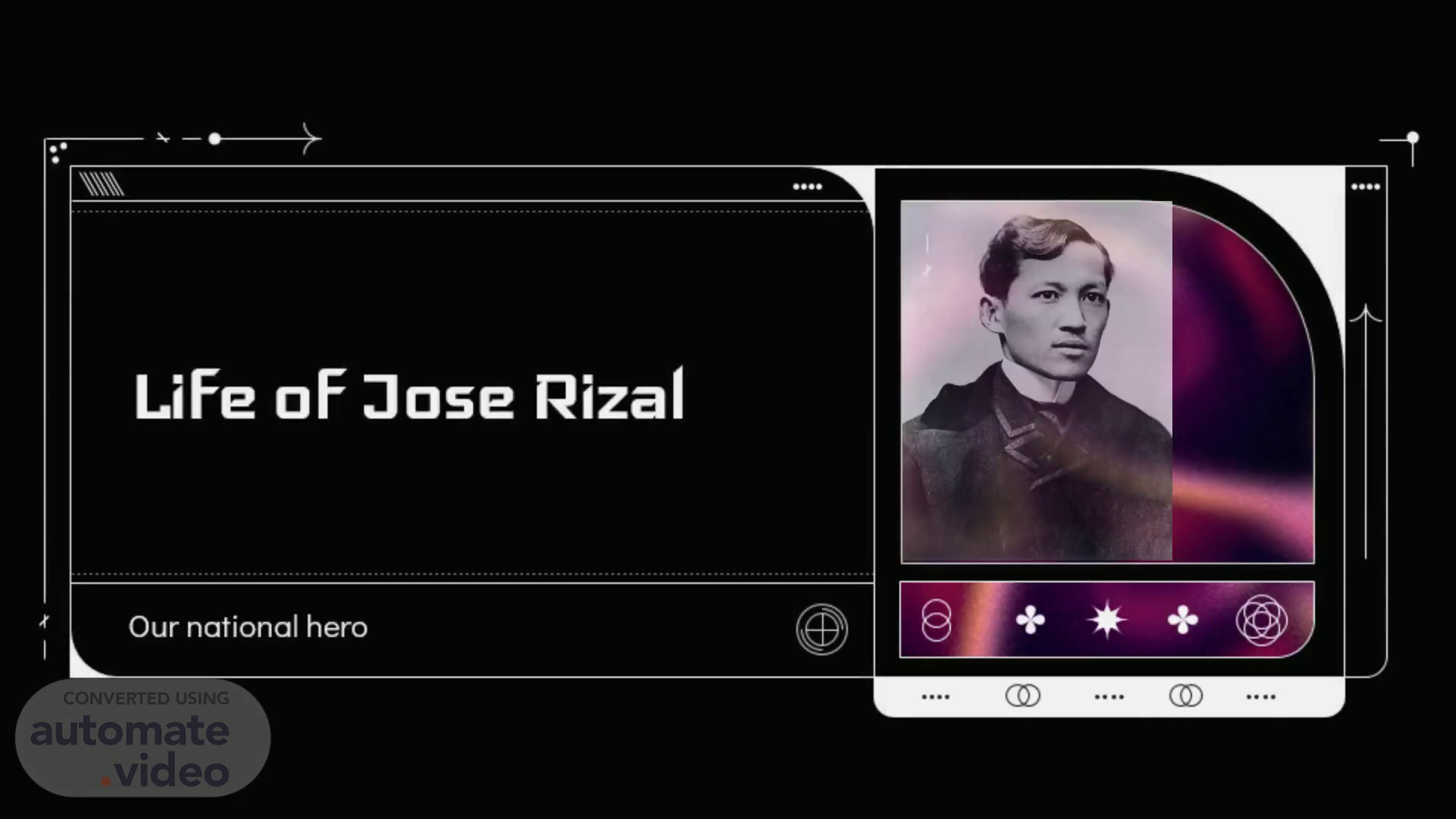Scene 1 (0s)
Our national hero. Life of Jose Rizal.
Scene 2 (13s)
Jose Rizal. .known as our pambansang bayani B orn on June 19, 1861 at Calamba, Philippines. D ied on December 30,1896. H is full name is Jose Protasio Rizal Mercado y Alonso Mercado The son of a prosperious landowner S tudied at Manila and University of Madrid. and man of letters who was an inspiration to the Philippine nationalist movement.
Scene 3 (31s)
His Works. Noli me Tangere. Is his first Novel published.
Scene 4 (46s)
The son of a prosperous landowner, Rizal was educated in Manila and at the University of Madrid . A brilliant medical student, he soon committed himself to the reform of Spanish rule in his home country , though he never advocated Philippine independence. Most of his writing was done in Europe, where he resided between 1882 and 1892..
Scene 5 (1m 5s)
In 1887 Rizal published his first novel, Noli me Tangere ( The Social Cancer), a passionate exposure of the evil Spanish Rule in the Philippines ..
Scene 6 (1m 17s)
A sequel El filibusterismo (1891; The Reign of Greed), established his reputation as the leading spokesman of the Philippine reform movement. He published and annotated edition (1890; reprinted 1958)of Antonio Morga’s Sucesos de las Islas Filipinas, hoping to show that the native people of the P hilippines had a long history before the coming of spaniards.He became a leader of Propaganda Movement contributing numerous articles to its newspaper, La Solidaridad published in Barcelona..
Scene 7 (1m 39s)
Rizal’s political program included integration of the Philippines as a province of Spain, representation in the Cortes (the Spanish parliament), the replacement of Spanish friars by Filipino priests, freedom of assembly and expression, and equality of Filipinos and Spaniards before the law. Rizal returned to the Philippines in 1892. He founded a nonviolent-reform society, the Liga Filipina , in Manila, and was deported to Dapitan in northwest Mindanao . He remained in exile for the next four years. In 1896 the Katipunan , a Filipino nationalist secret society , revolted against Spain..
Scene 8 (2m 6s)
Although he had no connections with that organization and he had had no part in the insurrection, Rizal was arrested and tried for sedition by the military. Found guilty, he was publicly executed by a firing squad in Manila. His martyrdom convinced Filipinos that there was no alternative to independence from Spain. On the eve of his execution, while confined in Fort Santiago, Rizal wrote “ Último adiós ” (“Last Farewell”), a masterpiece of 19th-century Spanish verse..
Scene 9 (2m 29s)
Student: Neña Joy Sarol. “One only dies once, and if one does not die well, a good opportunity is lost and will not present itself again .” -Jose Rizal.
